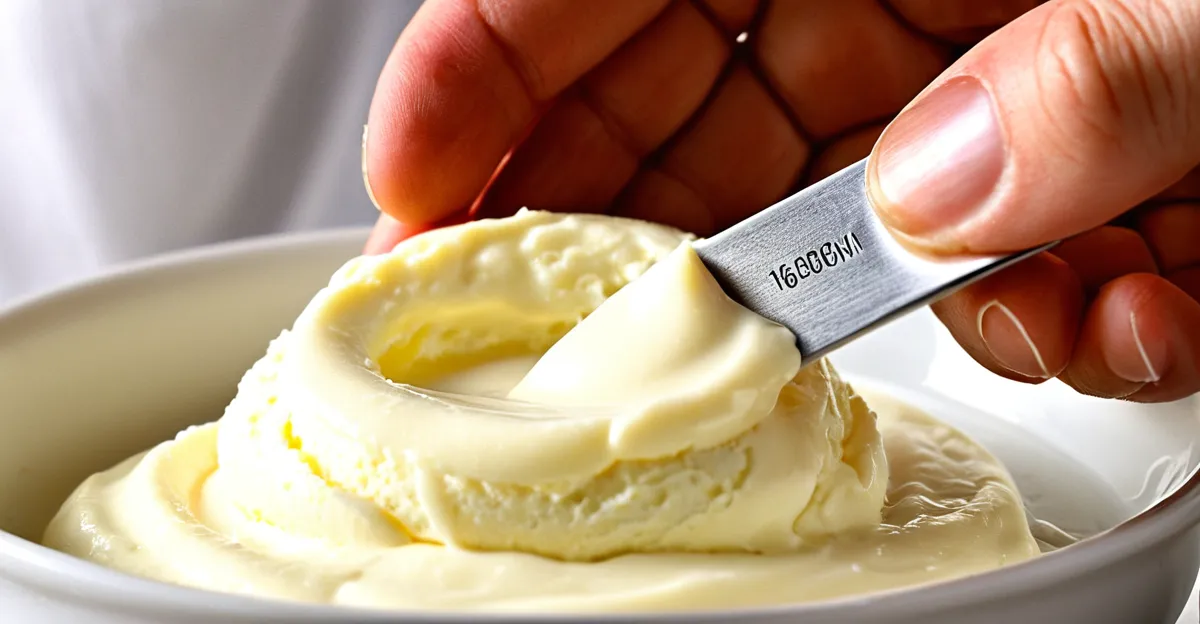Essential tools and ingredients for homemade clotted cream
When preparing homemade clotted cream, selecting the right clotted cream ingredients is crucial. The key component is high-quality, full-fat cream—traditionally unpasteurized, but at least pasteurized to preserve richness. The best milk for clotted cream is not typically fresh milk but rather thick cream with at least 55% fat content, which allows the characteristic thick texture to develop.
For tools, simple yet precise clotted cream tools enhance success. A shallow, wide ceramic or glass dish enables even heat distribution, essential for consistent clotting. A slow cooker can also be used but is covered under modern methods. A good kitchen thermometer helps monitor temperature, maintaining around 80°C (176°F) for 10 to 12 hours, ensuring the perfect crust and creamy layer. Additionally, a spatula helps gently separate the thickened cream from the milk layer below without disturbing the texture.
Also to discover : What are the best practices for cooking a succulent roast beef dinner?
Having the proper clotted cream ingredients and equipment streamlines preparation, providing a creamy clotted cream that rivals traditional versions in texture and flavour.
Traditional oven-baked clotted cream method
The traditional clotted cream method relies on the oven method to gently cook cream, producing its characteristic thick crust and smooth texture. Start by carefully pouring the high-fat cream—ideally the best milk for clotted cream with at least 55% fat—into a shallow, heatproof dish. Cover the dish loosely with foil to prevent skin formation but allow moisture to escape. Then, place it in a preheated oven set to a low temperature, typically around 80°C (176°F).
Also read : How Does British Cuisine Adapt to Modern Dietary Trends?
Cooking time ranges from 10 to 12 hours. This slow, consistent heat causes the cream to rise and clot, forming a golden crust on top. After baking, chill the cream for several hours or overnight to solidify the texture. Using clotted cream tools such as a spatula to gently lift the thickened layer ensures it remains smooth and unbroken.
The oven method excels at delivering authentic homemade clotted cream with a rich, luscious texture and a subtly nutty, cooked flavour. Its controlled low heat and slow cooking time are essential to avoid curdling or uneven clotting, making it the cornerstone technique for clotted cream enthusiasts seeking the classic taste and consistency.
Modern preparation techniques: slow cooker and stovetop
Exploring modern clotted cream methods offers convenient alternatives to the traditional oven method while still delivering creamy clotted cream. The slow cooker clotted cream technique involves pouring full-fat cream—ideally the best milk for clotted cream with over 50% fat content—into a low-sided dish or directly into the cooker. Set the slow cooker on low heat, maintaining roughly 80°C (176°F) for 10 to 12 hours. This steady warmth mimics the oven’s slow heat, promoting clotting and the formation of the golden crust on top.
For those preparing smaller batches, the stovetop clotted cream method uses gentle, controlled heat. Using a double boiler or a saucepan set to the lowest flame, the cream is heated slowly to about 80°C. Constant monitoring with a thermometer is essential to prevent curdling. Clotted cream tools such as a spatula help carefully lift the thickened cream layer once clotting occurs.
Both modern techniques prioritize consistent low temperatures and extended cooking times, replicating the texture and flavour of traditional clotted cream while adding flexibility for busy kitchens. These options are especially suitable for home cooks seeking delightful clotted cream without relying on an oven all day.







